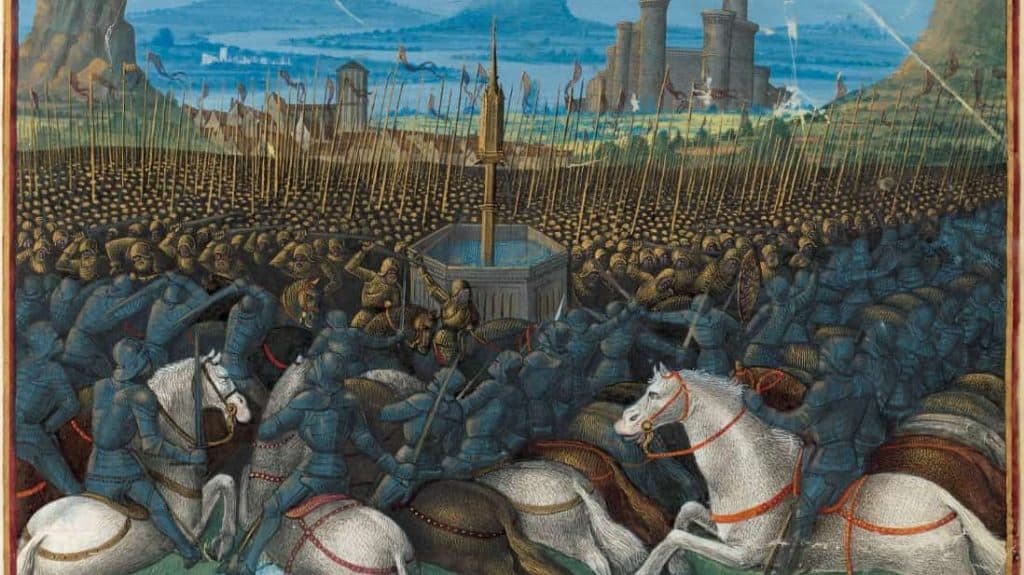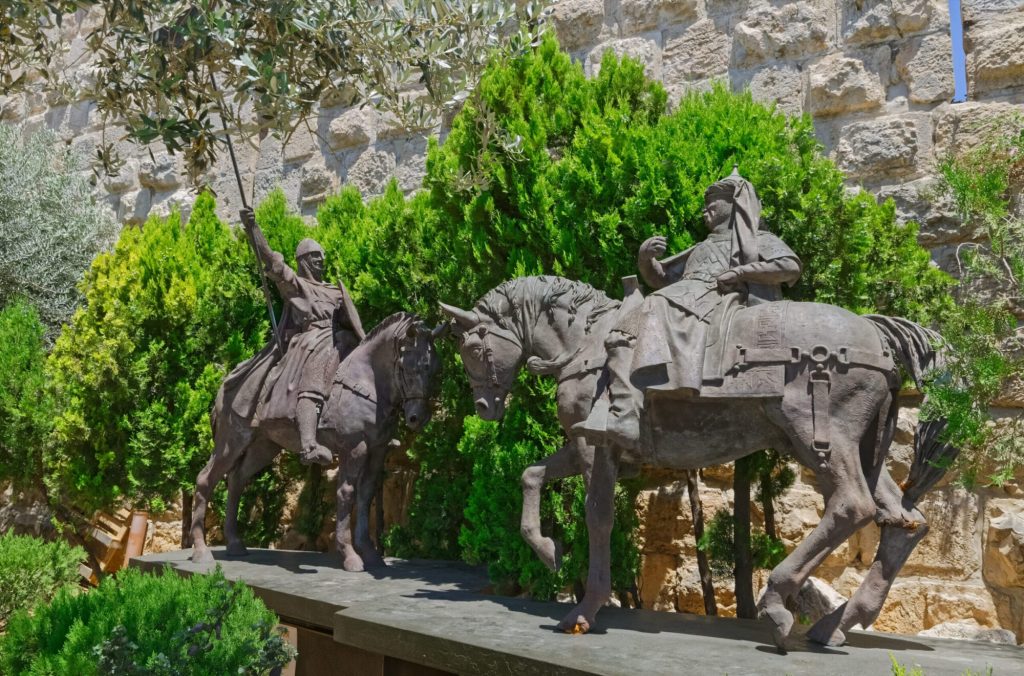The Siege of Jerusalem in 1187, during the Crusades, is a significant event in the history of the Holy Land. Furthermore, it marked a turning point in the struggle for control of Jerusalem between Christian Crusaders and Muslim forces led by Salah ad-Din Yusuf, commonly known as Saladin. Here’s an overview of the Siege of Jerusalem in 1187:
Battle of Hattin

Siege of Jerusalem in 1187- Some Background:
Crusader Presence: By the late 12th century, various Crusader states had been established in the Levant, including the Kingdom of Jerusalem, which had controlled the city of Jerusalem since 1099.
Muslim Response: In addition, Muslim leaders, including Saladin, sought to reunite Muslim territories in the Holy Land and challenge the Christian presence. Saladin’s rise to power and military campaigns posed a significant threat to the Crusader states.
Key Figures:
Saladin (Salah ad-Din): Saladin, a skilled military commander and diplomat, became the Sultan of Egypt and Syria and emerged as the leader of the Muslim forces in the region.
Balian of Ibelin: He was a crusader noble of the Kingdom of Jerusalem in the 12th century. He was lord of Ibelin from 1170 to 1193. As the city’s defense leader during the siege of Jerusalem in 1187, he surrendered Jerusalem to Saladin on 2 October 1187.
Saladin

The Siege:
The Siege of Jerusalem unfolded in the following manner:
Capture of Key Cities: Before the siege of Jerusalem, Saladin had successfully captured several key Crusader cities, weakening the Crusaders’ position in the region.
Dwindling Supplies: As the Muslim forces advanced, the Crusader defenders of Jerusalem faced dwindling supplies, and the city’s water sources were cut off.
Desperate Situation: Balian of Ibelin and his Christian knights and inhabitants were in a dire situation as Saladin’s forces surrounded the city.
Surrender Negotiations: Negotiations for the city’s surrender began, and Saladin offered terms that included safe passage for Christians to leave Jerusalem.
Capture of Jerusalem: Ultimately, on October 2, 1187, Jerusalem surrendered to Saladin. The Muslim forces entered the city peacefully, and the Christian residents could leave.
Siege of Jerusalem 1099

Siege of Jerusalem in 1187 – Consequences:
Loss of Jerusalem: Furthermore, the capture of Jerusalem by Saladin marked the end of nearly a century of Crusader rule in the city. It had profound religious and political ramifications.
Muslim Reunification: So Saladin’s successful campaign to recapture Jerusalem was a significant achievement in his efforts to unite Muslim territories in the Holy Land.
Third Crusade: Lastly, the fall of Jerusalem catalyzed the Third Crusade (1189-1192), which aimed to reclaim the Holy City from Saladin’s control. This led to the famous clash between European leaders like Richard the Lionheart and Saladin.
Legacy: The Siege of Jerusalem in 1187 symbolizes the complex and contested history of the Holy Land and continues to be a subject of historical and religious significance.
In conclusion, the Siege of Jerusalem in 1187 is a poignant episode in the history of the Crusades and the struggle for control of the Holy City. Ultimately, Saladin’s capture of Jerusalem and the subsequent events shaped the geopolitical landscape of the Holy Land for centuries to come. More about the subject on Wikipedia!

